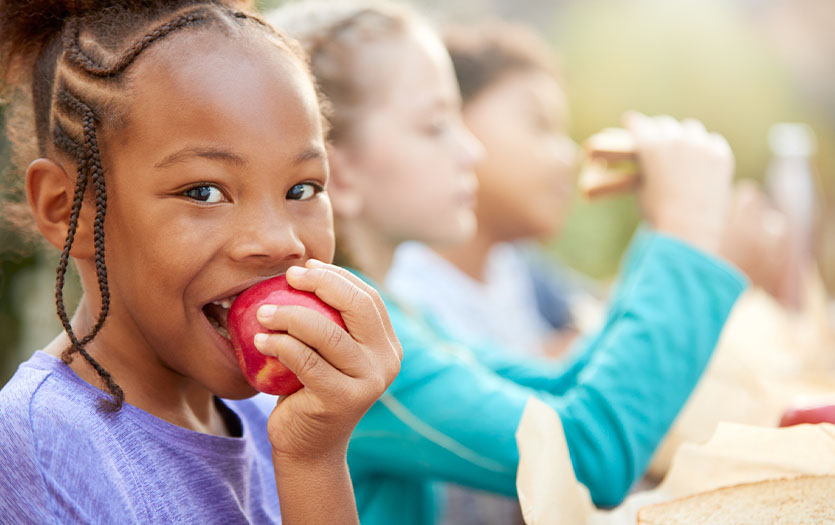.jpg)
This post was written based on a presentation by Lydia Conner, RDN, LD, community outreach dietitian, Parkview Center for Healthy Living and Chronic Disease Management.
During long days of travel and through the duration of our vacations, we often find ourselves eating out. These meals often are comprised of a lot of convenience or fast foods and fewer servings of fresh fruit and vegetables. After a couple days of eating quick meals, we might start to feel sluggish. Even though it takes a little extra preparation, incorporating nutritious food options into our travel diets can keep us feeling better and more energized while we enjoy our vacations.
Why include nutritious food options?
You want to feel your best on a vacation so you can enjoy your time to the fullest. Eating a well-rounded diet that includes fruits, vegetables and whole grains provides our bodies with the necessary vitamins and minerals to convert our food into energy. This means that a healthier diet will give us better and more sustained energy. Nutritious foods also contain vitamins, minerals and antioxidants that support our immune systems as we explore new places.
Have you ever found yourself feeling a little backed up on vacation? Making sure your diet includes foods high in fiber, like fruits, vegetables, whole grains, beans and legumes, and nuts and seeds, will help to keep bowel movements regular. Fiber also keeps us full longer, so you can do more adventuring before needing to stop for a bite!
Food safety while traveling
To keep yourself healthy while traveling, it’s important to pay attention to food safety, especially when purchasing grab-and-go type foods. Here are a few important food safety reminders:
• Wash your hands before eating.
- Carry hand sanitizer and disinfectant wipes handy as a backup.
- Clean surfaces (like tray table or rest stop table) before eating.
- Wash all fresh produce under running tap water.
- Keep cold food cold: below 41°F.
- Keep hot food hot: above 140°F.
- Pass on transporting hot food unless you have a portable heating unit.
- Eat food within two hours of purchasing it or throw it away.
- Do not eat raw fish, shellfish, meat or eggs.
Nutritious food ideas for travel days
Non-perishable snacks
- Whole or dried fruit
- Freeze-dried vegetables
- Nuts (pre-portioned into snack-size bags)
- Nut butters (travel packs are great for planes)
- Whole-grain pretzels or crackers
- Trail mix
- Snack bars made with whole grains, nuts and fruit, with few added sugars
Other nutritious snacks
- Part-skim mozzarella cheese stick
- Whole-grain sandwich made with lean meat, vegetables and mustard or with natural peanut butter & jam
- Fruit cup
- Pre-cut veggies (paired with nut butter brought from home)
Incorporating nutritious food at your destination
Here are some ways to add extra nutrients to your daily meals while at your vacation destination.
- If you have a mini fridge, grab some grocery staples, like healthy breakfasts, lunch options or snacks.
- At continental breakfasts, choose:
- Whole grain cereals, whole wheat bread, or oatmeal
- Lean protein options like low-fat dairy, boiled eggs, Greek yogurt or peanut butter
- Include fresh fruit, especially fruits in peels (bananas, oranges)
- Pack snacks for excursions so that you don’t get overly hungry or experience low blood sugar symptoms.
- Enjoy your restaurant meals with a fruit or a veggie on the side.
- Opt for water with your meals – typically the best for rehydrating and helps the fiber in your food do its job.
Remember to enjoy what you eat!
These are just suggestions to help you do your best. Vacations and special occasions are more about the memories than eating perfectly! This doesn’t mean that you shouldn’t enjoy “fun” foods like ice cream while on your vacation. But if you find yourself feeling less than your best, it might be time to consider how you’re fueling your body. Moderating portions of fun foods and adding little bits of nutritious foods can make all the difference!
Explore nutrition classes and events on our website.



